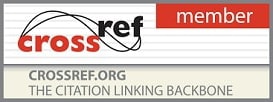Impact Factor: Impact Factor(RJIF): 5.3
International Journal of Home Science
2022, VOL. 8 ISSUE 2, PART E
Knowledge, attitude, practice on complementary feeding of young mothers
Author(s): Swetha E, Anusuya Devi K and Harinivashini M
Abstract:
Background: Complementary feeding has been defined as the process breast milk is no longer sufficient to meet the nutrition of the infants hence the complementary food implies as the cessation of Breastfeeding usually refers to the age range of 6-24months. Aim of the study is to assess the socio-demographic, KAP on infants feeding and weaning among mothers of not more than 3years of children
Methods: The study was carried out involving 103 infants feeding and weaning mothers aged 18-40 years from in and around Tamilnadu. The technique used to collect the data was convenience sampling method using direct and online questionnaire method. The prepared questionnaire is used to record the socio-demographic, KAP among the selected respondents.
Result: The study reveals that respondents were aged from 18-40 and 65% follows Hindu religion. 39% were educated with master’s degree,59% were homemaker, and their income is from <25,000 (33%) and 25-50,000 (27%), 55% were male child, 44% were female child. The most of the mothers starting complementary feeding at 9months (40%) and initiation of breast milk after delivery were within one hour of birth (60%). All the mothers prefer homemade foods (110%) rather than the commercial foods. 75% of mothers were comfortable with bowl and spoon for feeding infant and 80% of the mothers from the selected respondents follows good hygienic practices.
Conclusion: The study reveals significant association between knowledge of the mothers on complementary feeding and age of the mothers that the knowledge, attitude, practice on infant feeding and weaning mothers were inadequate among notable respondents and the timing and duration of complementary feeding were inappropriate. False beliefs customs and attitude of the mothers tends to wean the child late. The poor breastfeeding and inappropriate complementary feeding practices the principle proximate causes of malnutrition during the first two years of age. Hence the education was given from proper breastfeeding to introduce the complementary feeding at right age with right amount of food.
Pages: 305-311 | 412 Views 235 Downloads
How to cite this article:
Swetha E, Anusuya Devi K, Harinivashini M. Knowledge, attitude, practice on complementary feeding of young mothers. Int J Home Sci 2022;8(2):305-311. DOI: 10.22271/23957476.2022.v8.i2e.1330






